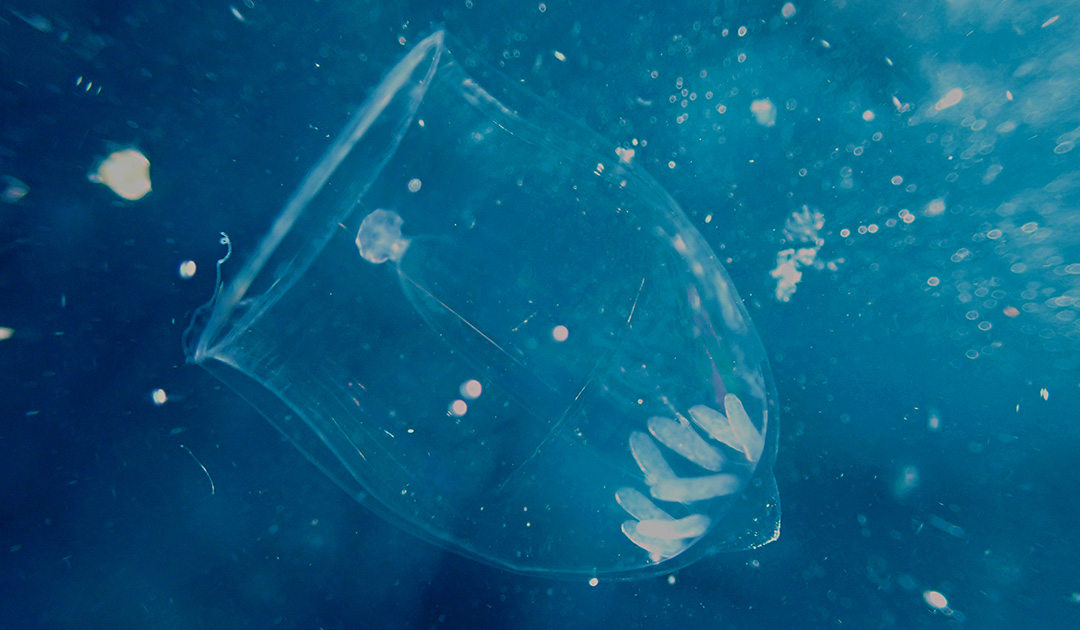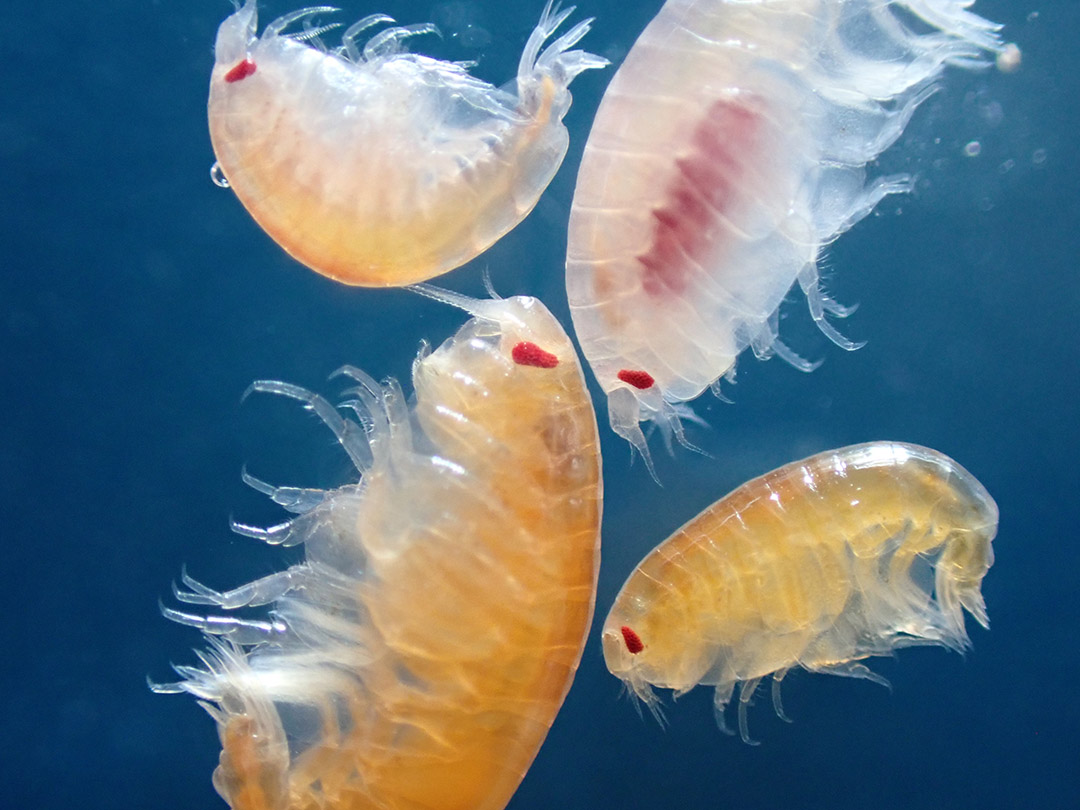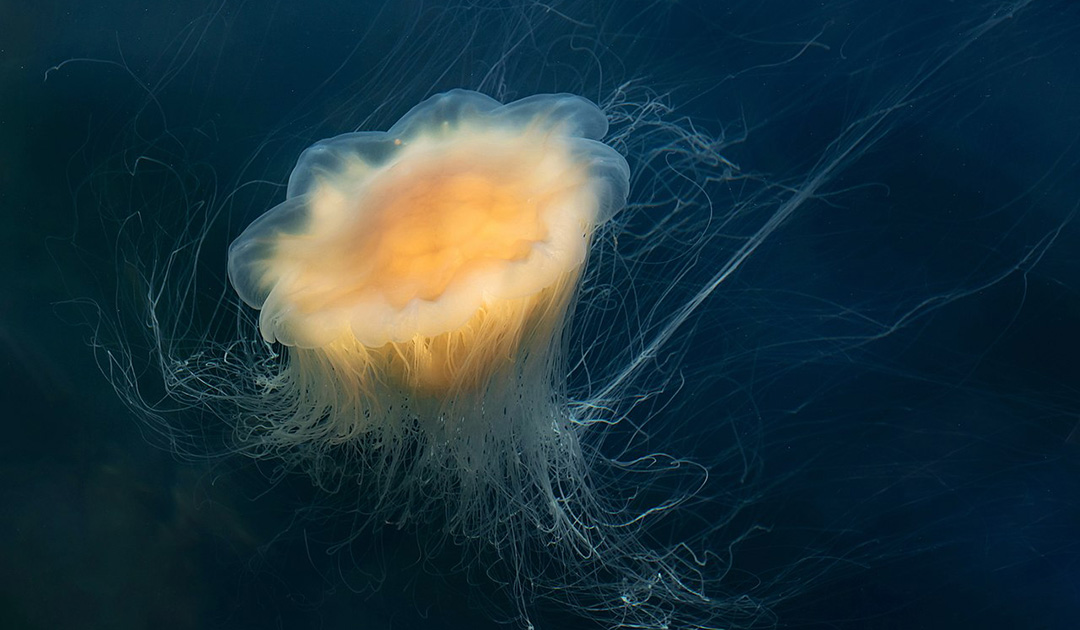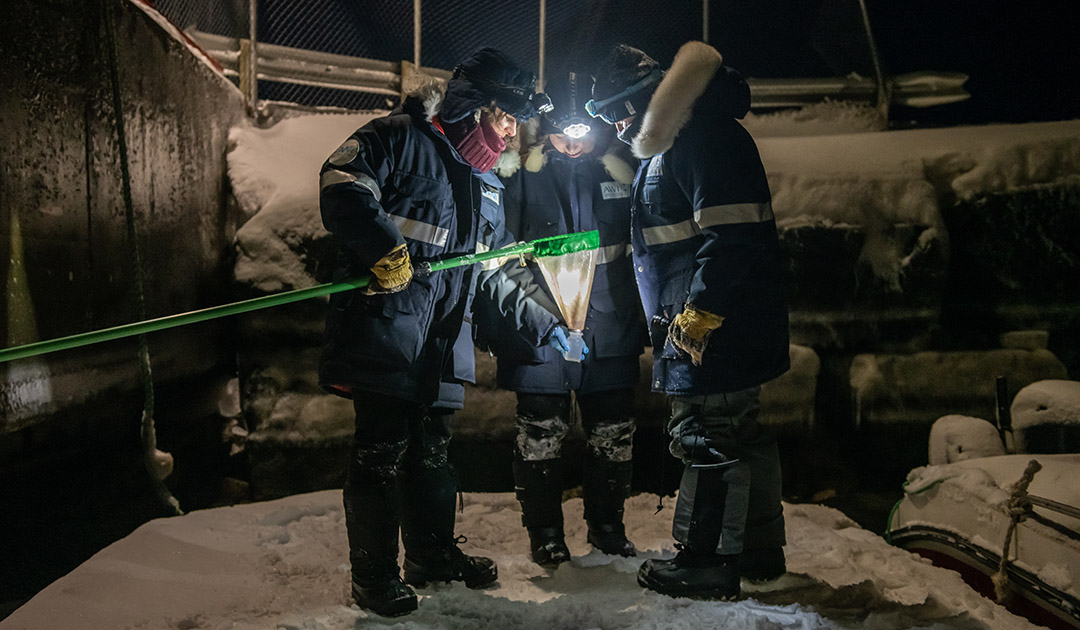
With the help of so-called DNA metabarcoding, researchers from the Alfred Wegener Institute (AWI) discovered that apparently little nutritious jellyfish make up a considerable part of the diet of amphipods during the polar night.
Whether scyphoza (“true jellyfish”), hydrozoans or comb jellies – these organisms, which are less recognised even in the scientific community, apparently represent an important source of food during the polar night. A recent study by an AWI research team, published yesterday in Frontiers in Marine Science, shows that several species of amphipods rely on a number of jellyfish species as a food source during the Arctic winter. Amphipods, in turn, are considered key organisms and play an important role in the Arctic food web.

However, the jellyfish species that the research team was able to detect in the digestive tract of the amphipods are not native to the Arctic Ocean. They reach the far north from the boreal zone with warm, saltier Atlantic water, which is increasingly flowing into the Arctic due to climate change.
The Svalbard archipelago is also influenced by this “Atlantification”. Atlantic conditions already prevail in the Kongsfjord on the west coast of Spitsbergen, where the water temperature during the polar night has risen by 2° C per decade. These changes certainly have an impact on the species composition.
“Some jellyfish species in particular tend to spread poleward and into the Arctic,” Dr. Charlotte Havermans, head of the ARJEL junior research group at the Alfred Wegener Institute, said in a press release. “When we were in Kongsfjorden in the Polar Night in 2022, we were very surprised to see the fjord teeming with jellyfish life, consisting of many different species and life stages, and they seemed to be the dominant zooplankton in winter time.”
To determine the diet of the amphipods, the research team used the state-of-the-art method of DNA metabarcoding, whereby short gene fragments from the animals’ stomachs are sufficient to identify their prey species. “We found a large number of jellyfish in the stomachs of the amphipods, from the largest jellyfish in the fjord to tiny hydrozoans,” Dr. Havermans explained. “We were able to prove for the first time that amphipod scavengers feed on the remains of jellyfish. This had previously only been shown in experimental environments.”

Jellyfish made up a large part of the diet of the two amphipod species of the suborder Gammaridea in particular. In contrast, the researchers found significantly less jellyfish DNA in the two scavenging species. These mainly fed on fish as well as on worms, crustaceans and molluscs. Macroalgae were also an important part of the diet of all four species.
In the past, jellyfish were regarded as a dead end in marine food webs because they were considered to be of little nutritional value. Only recent studies show that they are likely to be a significant food source for invertebrates and fish. “We have always assumed that the nutritional value of jellyfish is low, but this has only been investigated for less than a handful of species, and also depends on the tissues that are utilized,” Dr Havermans said.
The study offers completely new insights into the Arctic food web during the polar night and demonstrates the importance of jellyfish for the first time. “Until now, we knew nothing about the role of jellyfish as prey in this area. It was also not known that the species Gammaridea, for example, feeds on jellyfish at all, not in the Arctic, but also not elsewhere,” Dr. Havermans said. “With this study, we reveal crucial links in the Arctic food web that were so far not known. This is fundamental because we need to understand how jellyfish fit into food webs and spread in an Arctic that is changing rapidly. This also applies to the neighboring shelf seas, as ten percent of the world’s fisheries take place in these areas.”

Next, the ARJEL research group plans to investigate the role of jellyfish in the other seasons. “Jellyfish could be among the winners of climate change that will continue to spread during the global warming. We have also predicted that jellyfish will become more common in the Arctic as temperatures continue to rise.”
Julia Hager, PolarJournal
Featured image: Charlotte Havermans, AWI
More about this topic:





